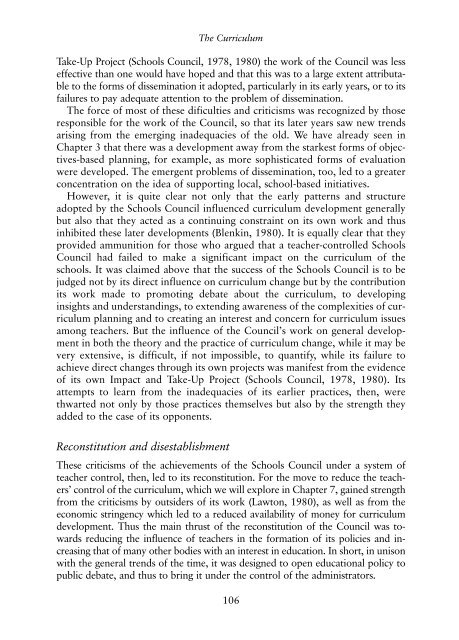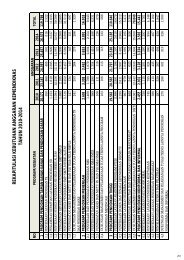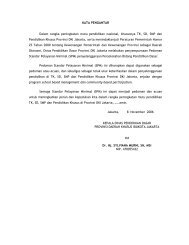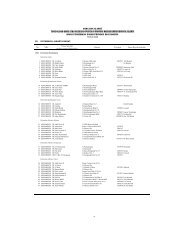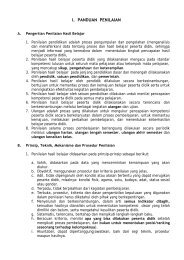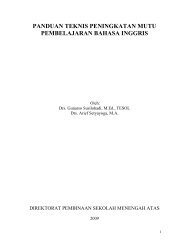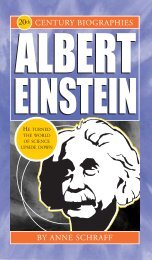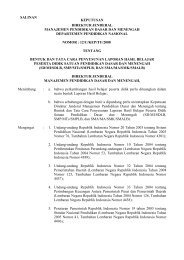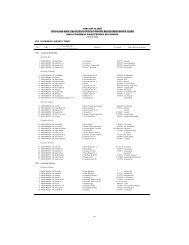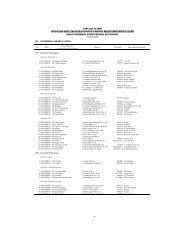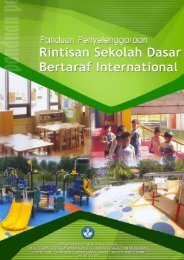The Curriculum - WordPress.com
The Curriculum - WordPress.com
The Curriculum - WordPress.com
Create successful ePaper yourself
Turn your PDF publications into a flip-book with our unique Google optimized e-Paper software.
<strong>The</strong> <strong>Curriculum</strong>Take-Up Project (Schools Council, 1978, 1980) the work of the Council was lesseffective than one would have hoped and that this was to a large extent attributableto the forms of dissemination it adopted, particularly in its early years, or to itsfailures to pay adequate attention to the problem of dissemination.<strong>The</strong> force of most of these dificulties and criticisms was recognized by thoseresponsible for the work of the Council, so that its later years saw new trendsarising from the emerging inadequacies of the old. We have already seen inChapter 3 that there was a development away from the starkest forms of objectives-basedplanning, for example, as more sophisticated forms of evaluationwere developed. <strong>The</strong> emergent problems of dissemination, too, led to a greaterconcentration on the idea of supporting local, school-based initiatives.However, it is quite clear not only that the early patterns and structureadopted by the Schools Council influenced curriculum development generallybut also that they acted as a continuing constraint on its own work and thusinhibited these later developments (Blenkin, 1980). It is equally clear that theyprovided ammunition for those who argued that a teacher-controlled SchoolsCouncil had failed to make a significant impact on the curriculum of theschools. It was claimed above that the success of the Schools Council is to bejudged not by its direct influence on curriculum change but by the contributionits work made to promoting debate about the curriculum, to developinginsights and understandings, to extending awareness of the <strong>com</strong>plexities of curriculumplanning and to creating an interest and concern for curriculum issuesamong teachers. But the influence of the Council’s work on general developmentin both the theory and the practice of curriculum change, while it may bevery extensive, is difficult, if not impossible, to quantify, while its failure toachieve direct changes through its own projects was manifest from the evidenceof its own Impact and Take-Up Project (Schools Council, 1978, 1980). Itsattempts to learn from the inadequacies of its earlier practices, then, werethwarted not only by those practices themselves but also by the strength theyadded to the case of its opponents.Reconstitution and disestablishment<strong>The</strong>se criticisms of the achievements of the Schools Council under a system ofteacher control, then, led to its reconstitution. For the move to reduce the teachers’control of the curriculum, which we will explore in Chapter 7, gained strengthfrom the criticisms by outsiders of its work (Lawton, 1980), as well as from theeconomic stringency which led to a reduced availability of money for curriculumdevelopment. Thus the main thrust of the reconstitution of the Council was towardsreducing the influence of teachers in the formation of its policies and increasingthat of many other bodies with an interest in education. In short, in unisonwith the general trends of the time, it was designed to open educational policy topublic debate, and thus to bring it under the control of the administrators.106


